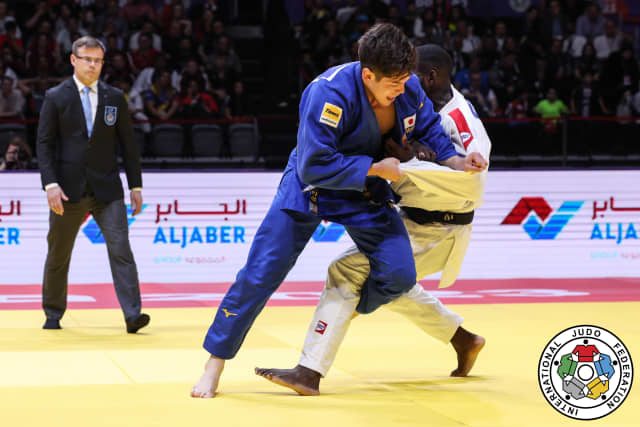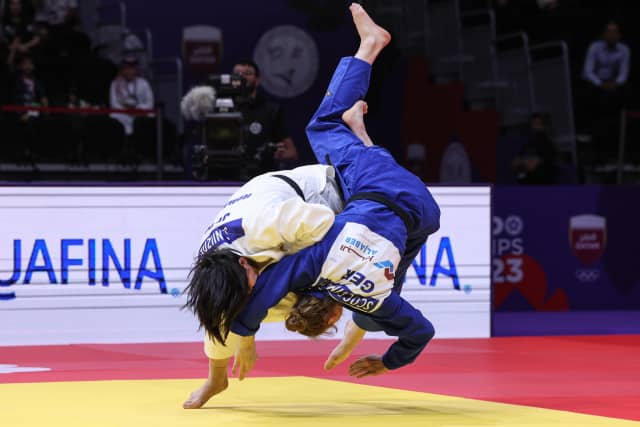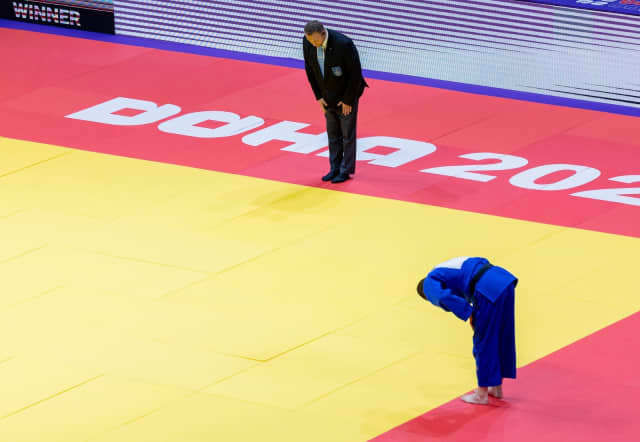“First of all, I like both categories, -90kg and -70kg. The engagement has been very good and with a high technical level. Actually the whole competition so far has been like that and it is fantastic to see it so consistently across the categories. Perhaps the eligibility criteria including judoka being among the top 100 in the world affects the level positively and it is also likely that as we approach the Olympic Games, everyone wants to take the place and so the judo becomes sharper. There is no space anymore for poor application of technique.
I am sure that 80% of the athletes who come to the Paris 2024 Olympic Games will have fought here in Doha. The points here are so important. There is a hierarchy and the WRL is an essential part of that. In Paris, to be in the top 4, preferably, or maybe top 8 is necessary otherwise it is a lottery. They all understand what it can mean to be unseeded and that must play a part in the intensity of contests here.
We are seeing a lot of ne-waza and the referees are allowing time to develop situations there. I saw a lot of osae-komi-waza ahead of kansetsu and shime-waza, possibly in part due to the time being allowed. We no longer have to rely only on the instant catch and submission. Osae-komi is a constructed and now there is time to prepare and build apply knowing that the exchange while not be stopped by the referee, as long as there is clear progress. We can see well practised strategies in ground work.
In the past there has been a lot of playing with the grips, including some avoidance but now we see strong kumi-kata and judoka are willing to take hold. Sanctions for passivity are also working well, encouraging the attack-rate to rise. Referees can identify the strategies of defending and can also see when there is a real intention to attack or perhaps even to misuse the rules to gain an unwarranted advantage, time, for example. In Doha all of that has been well managed and penalties have been applied skilfully.
I appreciate that when there has been a golden score contest, it is sometimes difficult to lose by shido, especially when it’s for a medal but it is better to apply the rules strictly and like this judo progresses.
We have seen an outstanding range of techniques both as combinations to gain positive entries and as direct scoring attacks; from uchi-mata, seoi and kata guruma attacks to sumi-gaeshi and ko-uchi-gari, real variety. To show that kind of technical ability is part of the proof of physical condition: the judoka have arrived really ready for this event.
My final point is one we have mentioned a few times recently but I have been happy to see the respect from 99% of competitors with the bow. Here is an article published just today on the subject of bowing:
The General Secretariat is in charge of discipline but we are very happy to see there have been no issues requiring our intervention. Bowing is just the surface of that but it is a really strong indication that the respect is being shown just as it should be.”
Just two days of individual competition remain and tomorrow will bring the chance for the women -78kg and men -100kg to compete for gold in Doha.
To watch more images of the World Judo Championships - Doha 2023 - CLICK HERE




